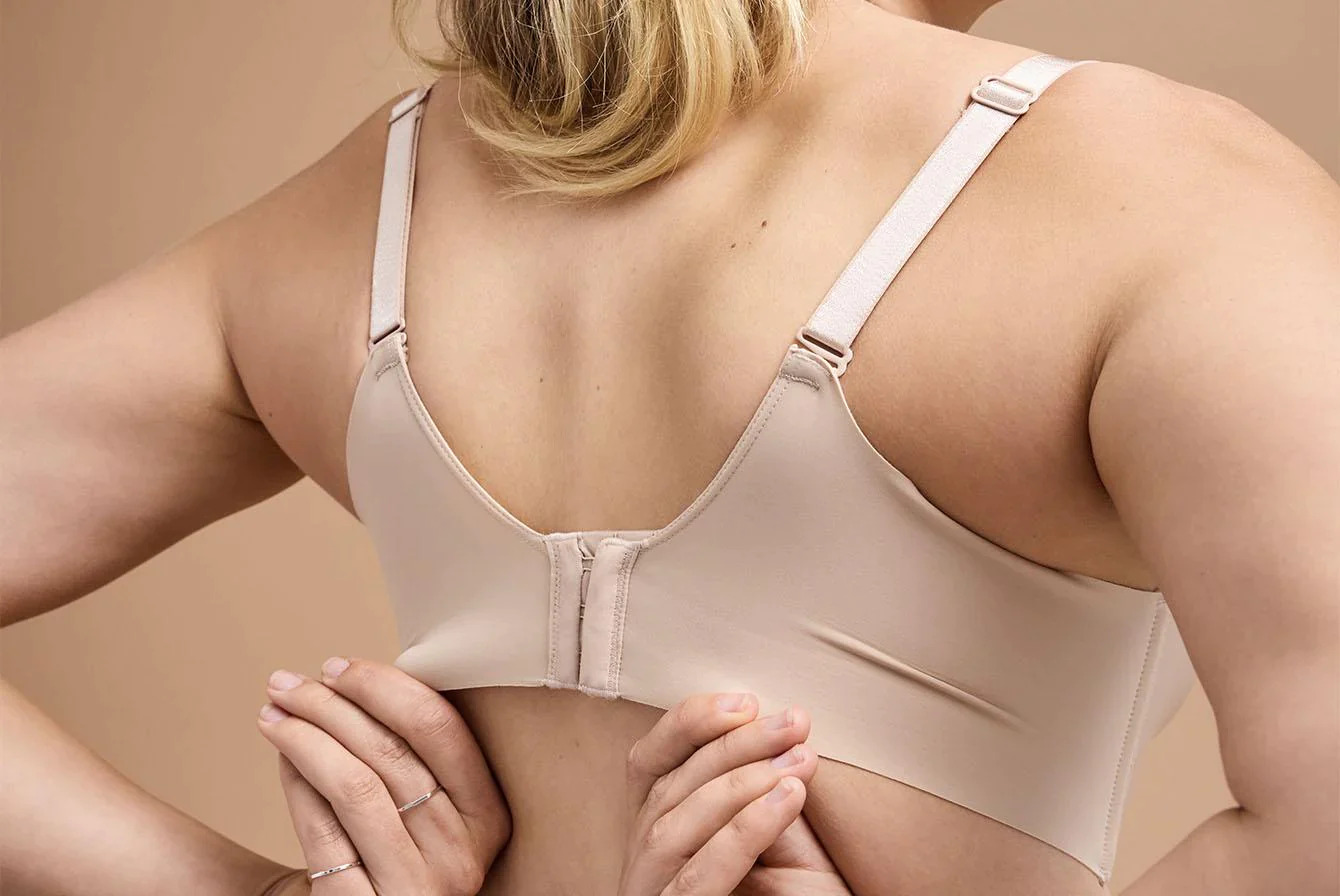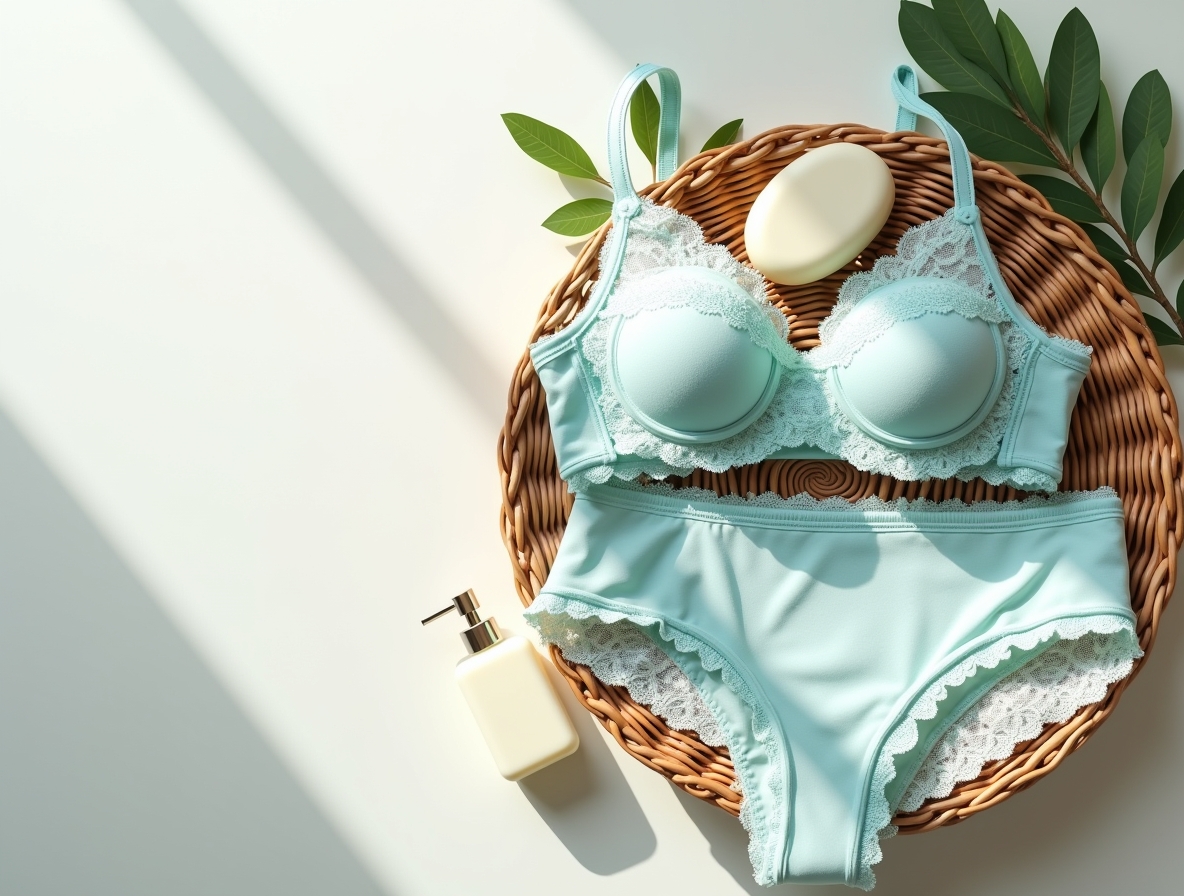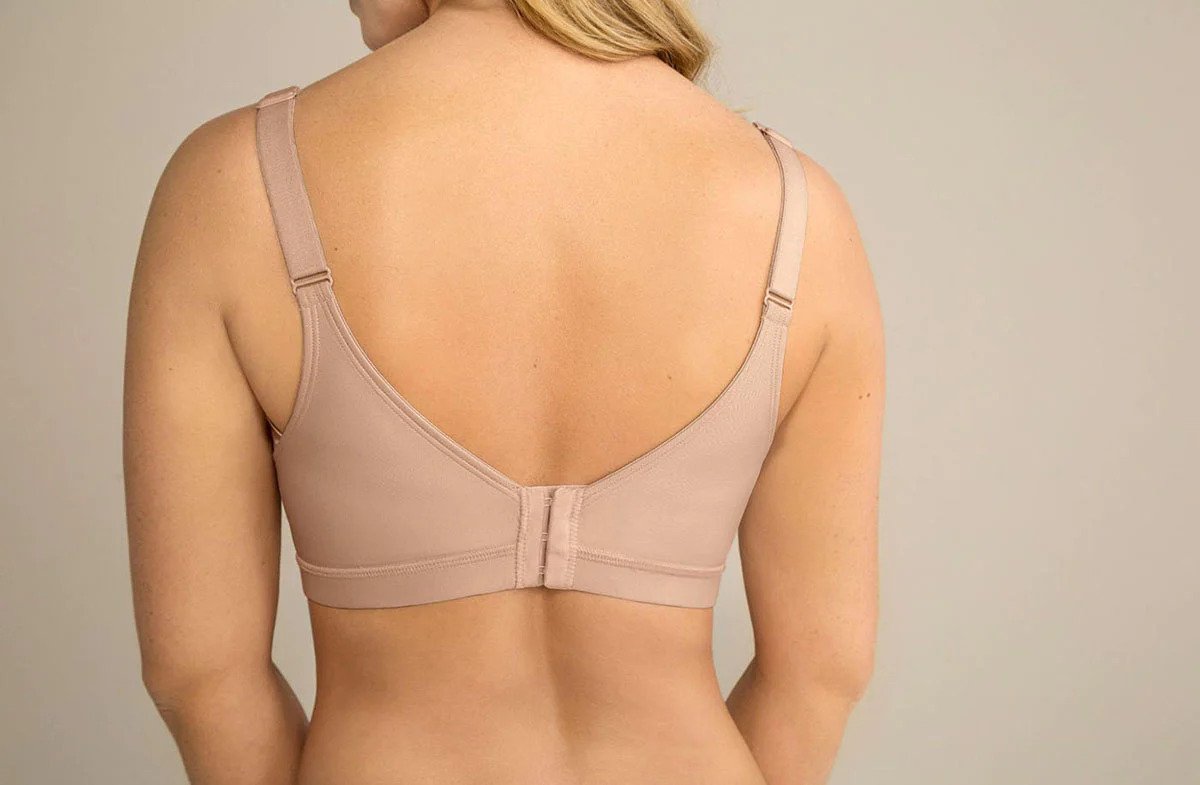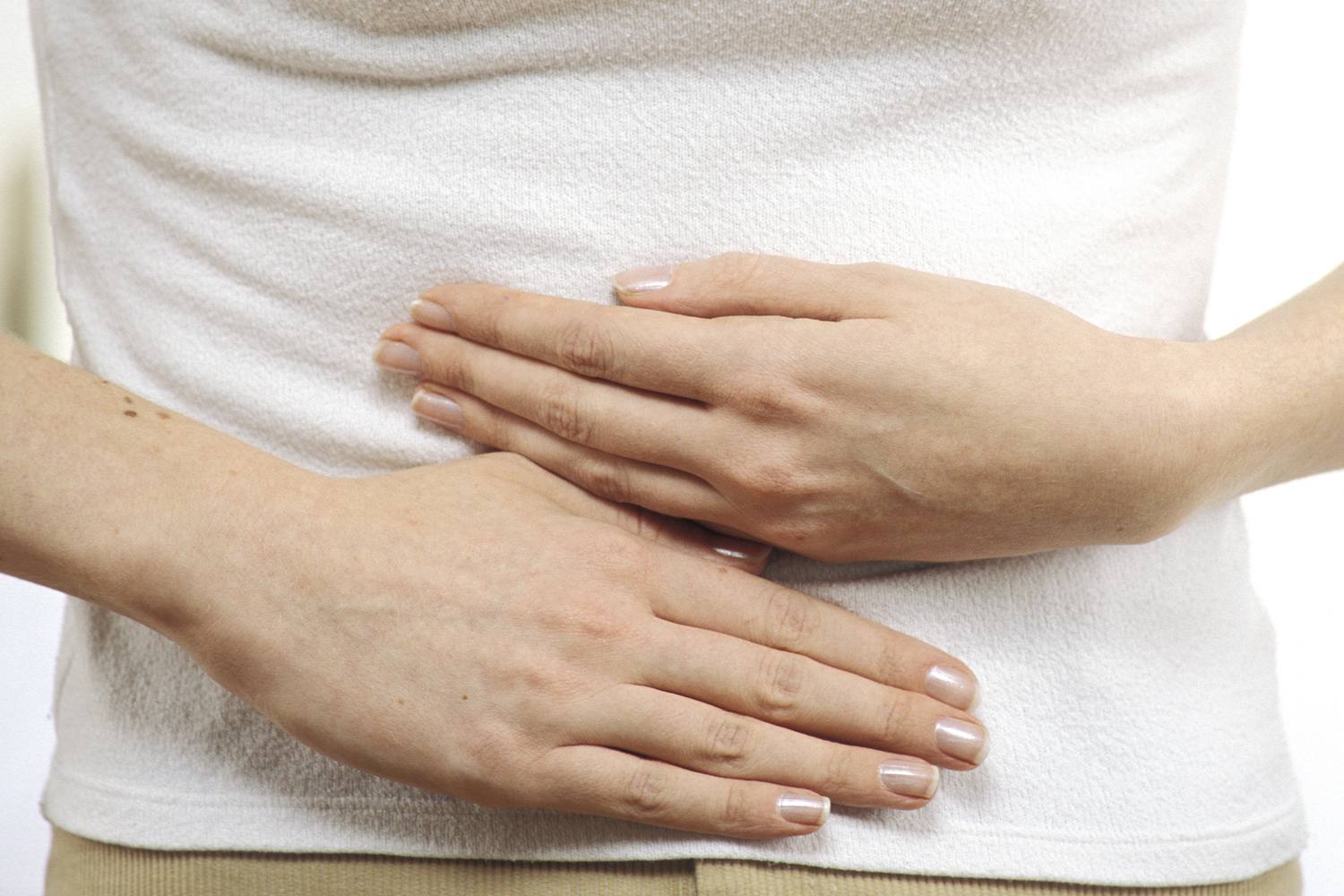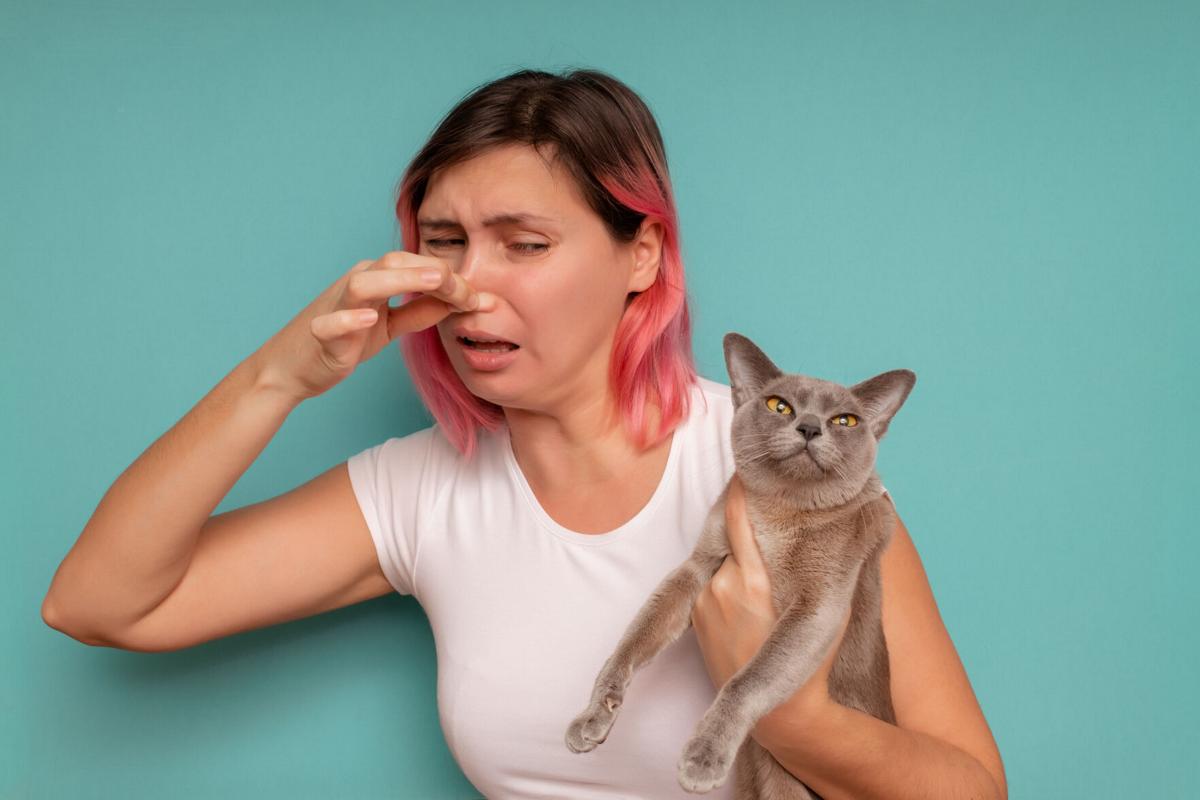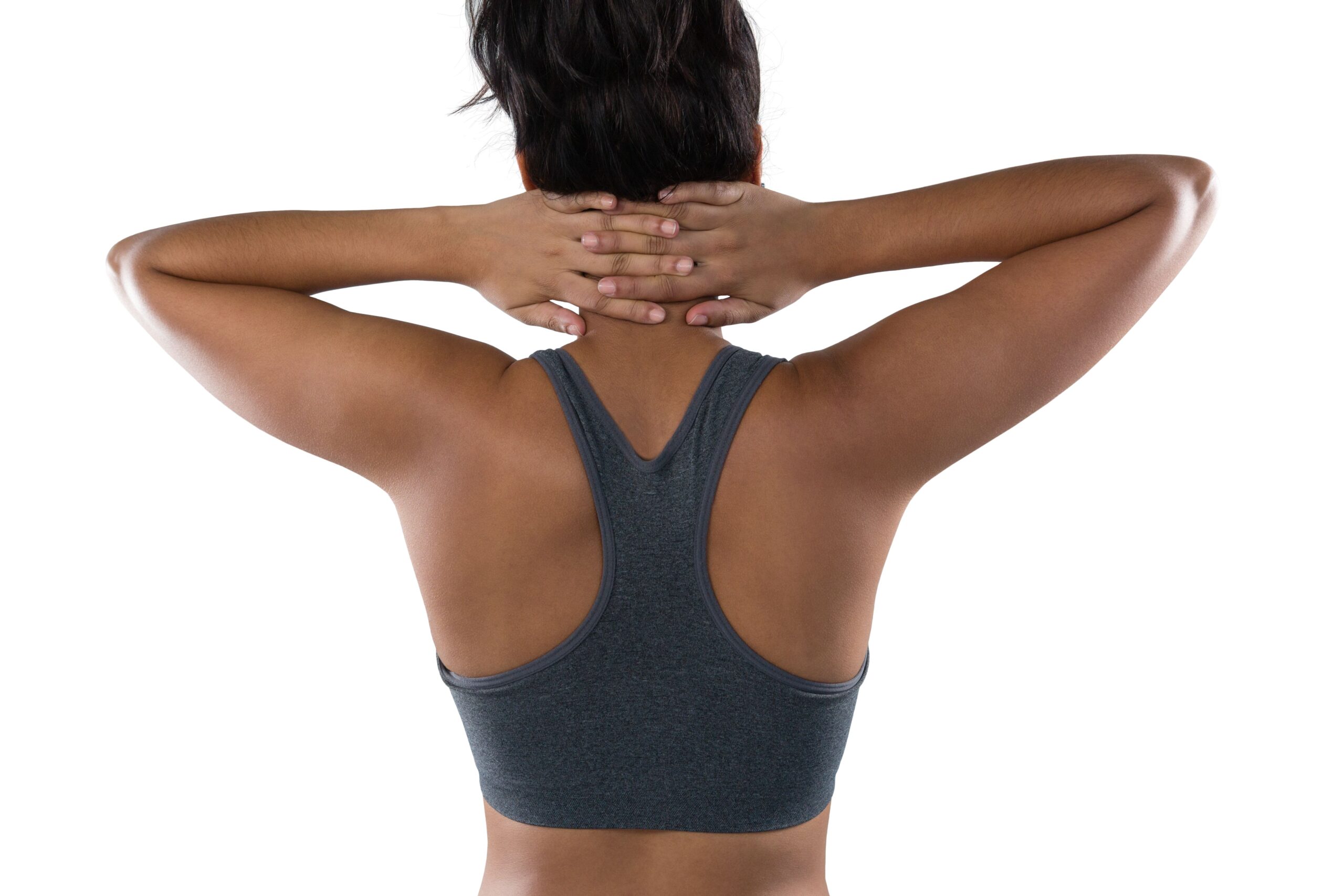Home>Women's Underwear>Bras>Why Does My Bra Make Me Itch
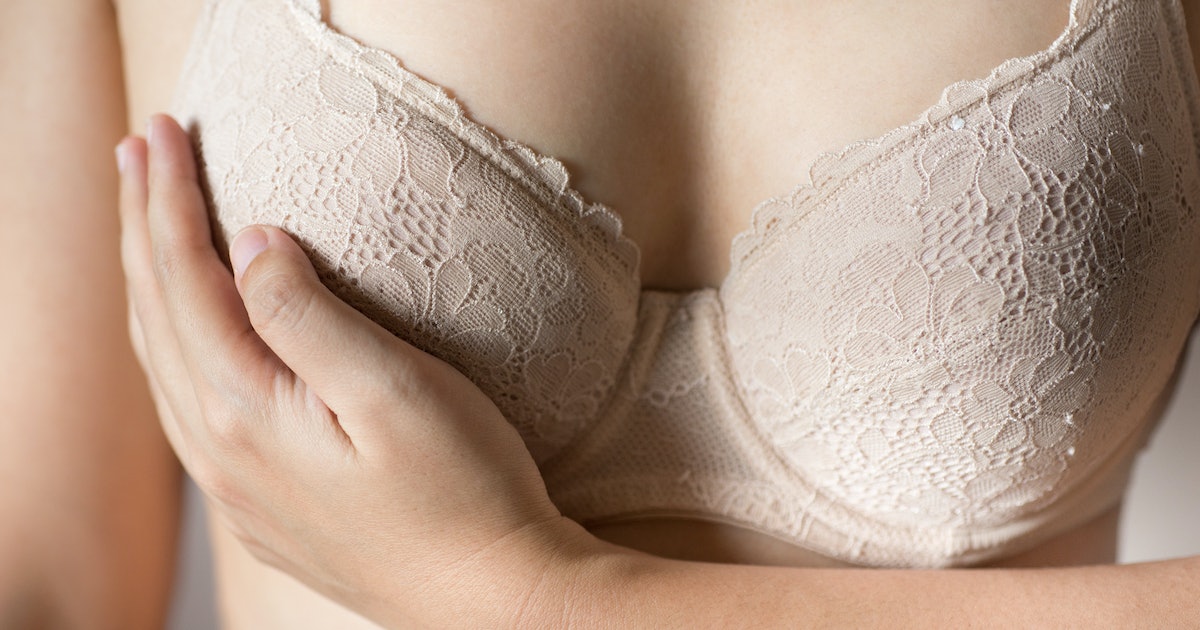

Bras
Why Does My Bra Make Me Itch
Modified: August 5, 2023
Discover the reasons why your bras may be causing you discomfort and itchiness. Find solutions to alleviate itchiness and enjoy all-day comfort.
(Many of the links in this article redirect to a specific reviewed product. Your purchase of these products through affiliate links helps to generate commission for Under-tec.com, at no extra cost. Learn more)
Table of Contents
- Introduction
- Understanding the Components of a Bra
- Common Causes of Bra Itchiness
- Allergic Reactions to Bra Materials
- Skin Sensitivity and Irritation
- Sweat and Moisture Buildup
- Ill-fitting Bras and Friction
- Tips for Preventing Bra Itchiness
- Proper Bra Selection and Sizing
- Choosing Breathable and Hypoallergenic Materials
- Practicing Good Bra Hygiene
- Managing Sweat and Moisture
- Treating Bra Itchiness
- Conclusion
Introduction
As women, we rely on our bras for support, comfort, and confidence. However, there are times when our trusty bras can become a source of annoyance and frustration. One common complaint that many women experience is itchiness. Why does your bra make you itch? Is it the fabric, the size, or something else altogether? In this article, we will delve into the various factors that can cause bra itchiness and explore some effective ways to prevent and treat this uncomfortable issue.
Understanding the Components of a Bra
Before we delve into the reasons behind bra itchiness, let’s take a moment to understand the different components of a typical bra. A bra consists of a band, cups, straps, hooks, and sometimes underwire. Each of these elements plays a role in providing support and shaping the breasts.
Common Causes of Bra Itchiness
There can be several reasons why your bra may cause itching, ranging from allergic reactions to skin sensitivity or an ill fit. Let’s explore some of these factors in more detail:
Allergic Reactions to Bra Materials
One of the primary reasons why a bra can make you itch is an allergic reaction to the materials used in its construction. Many bras are made from synthetic fabrics like nylon, polyester, or spandex, which can irritate sensitive skin. Additionally, some dyes and chemicals used to treat these fabrics can cause skin reactions.
Skin Sensitivity and Irritation
If you have naturally sensitive skin, you may be more prone to experiencing itchiness when wearing a bra. Even natural fibers like cotton can sometimes cause irritation, especially if they are not properly breathable. A compromised skin barrier or conditions like eczema can also make the skin more prone to itching.
Sweat and Moisture Buildup
Another common cause of bra itchiness is sweat and moisture buildup. As we go about our day, our bodies naturally produce sweat, especially in areas where there is friction or limited airflow. When sweat becomes trapped between the skin and the bra fabric, it can lead to irritation and itching.
Ill-fitting Bras and Friction
An ill-fitting bra can also contribute to itching. Bras that are too tight can cause friction against the skin, leading to redness, chafing, and itchiness. On the other hand, bras that are too loose may not provide adequate support and can shift around, causing irritation.
Understanding the Components of a Bra
Before we delve into the reasons behind bra itchiness, let’s take a moment to understand the different components of a typical bra. A bra consists of a band, cups, straps, hooks, and sometimes underwire. Each of these elements plays a role in providing support and shaping the breasts.
The band is the part of the bra that wraps around the torso, just beneath the bust. It is responsible for providing the majority of the bra’s support. The band should fit snugly but not too tightly, as this can lead to discomfort and irritation.
The cups are the fabric-covered, curved portions of the bra that encase and support the breasts. The cups come in various styles, such as full coverage, demi-cup, or push-up. The size and shape of the cups can greatly impact the fit and comfort of the bra.
The straps are the adjustable bands that extend from the cups up over the shoulders and connect to the back of the bra. They help to lift and support the breasts while keeping the bra in place. Straps that are too tight or too loose can cause discomfort and contribute to itching.
The hooks and closures are located at the back of the bra and allow for adjustments in the band size. These closures can be in the form of hooks, clasps, or even a front closure. It is essential to have the right fit and tension in the closures to ensure optimal comfort and support.
Some bras also feature underwire, which is a thin, flexible wire encased in the fabric at the base of the cups. Underwire provides additional support and helps to shape the breasts. However, poorly fitted or bent underwires can dig into the skin, leading to discomfort and itchiness.
Understanding the components of a bra is important because each element can contribute to the overall fit and comfort of the garment. When any of these components are ill-fitting or irritate the skin, it can lead to itchiness and annoyance.
In the next sections, we will explore the common causes of bra itchiness and provide practical tips to prevent and treat this pesky problem.
Common Causes of Bra Itchiness
There can be several reasons why your bra may cause itching, ranging from allergic reactions to skin sensitivity or an ill fit. Let’s explore some of these factors in more detail:
Allergic Reactions to Bra Materials
One of the primary reasons why a bra can make you itch is an allergic reaction to the materials used in its construction. Many bras are made from synthetic fabrics like nylon, polyester, or spandex, which can irritate sensitive skin. Additionally, some dyes and chemicals used to treat these fabrics can cause skin reactions.
Skin Sensitivity and Irritation
If you have naturally sensitive skin, you may be more prone to experiencing itchiness when wearing a bra. Even natural fibers like cotton can sometimes cause irritation, especially if they are not properly breathable. A compromised skin barrier or conditions like eczema can also make the skin more prone to itching.
Sweat and Moisture Buildup
Another common cause of bra itchiness is sweat and moisture buildup. As we go about our day, our bodies naturally produce sweat, especially in areas where there is friction or limited airflow. When sweat becomes trapped between the skin and the bra fabric, it can lead to irritation and itching.
Ill-fitting Bras and Friction
An ill-fitting bra can also contribute to itching. Bras that are too tight can cause friction against the skin, leading to redness, chafing, and itchiness. On the other hand, bras that are too loose may not provide adequate support and can shift around, causing irritation.
Tags and Labels
The tags and labels attached to bras can sometimes cause irritation and itchiness. These tags are often made of stiff materials and can rub against the skin, causing discomfort. Some individuals may be particularly sensitive to the ink used in the printing of tags and labels.
Laundry Detergent and Fabric Softeners
The products we use to launder our bras can also contribute to itchiness. Certain laundry detergents and fabric softeners contain harsh chemicals and fragrances that can irritate the skin. It is essential to choose gentle, hypoallergenic detergents and avoid using fabric softeners on bras.
By understanding the common causes of bra itchiness, you can take proactive steps to prevent and address the issue. In the following sections, we will explore some practical tips for preventing bra itchiness and provide effective methods for treating it if it does occur.
Allergic Reactions to Bra Materials
One of the primary reasons why a bra can make you itch is an allergic reaction to the materials used in its construction. Many bras are made from synthetic fabrics like nylon, polyester, or spandex, which can irritate sensitive skin. Additionally, some dyes and chemicals used to treat these fabrics can cause skin reactions.
When your skin comes into contact with a fabric or chemical that triggers an allergic reaction, it can manifest as redness, itching, rash, or even hives. Some individuals may be more prone to these reactions due to underlying allergies or sensitivity.
If you suspect that you may be experiencing an allergic reaction to your bra, there are a few steps you can take to alleviate the itchiness:
1. Opt for natural and hypoallergenic materials: Consider choosing bras made from natural fibers like cotton, bamboo, or silk. These materials are generally more breathable and less likely to cause irritation. Look for bras that are labeled as hypoallergenic or specifically designed for sensitive skin.
2. Avoid bras with harsh dyes and chemicals: Some bras are treated with chemical finishes or dyes that can trigger allergic reactions. Check the labels or product descriptions to ensure that the bras you choose are free from these potentially irritating substances.
3. Wash your bras before wearing: Before wearing a new bra, it is recommended to wash it first. This can help remove any residual chemicals or irritants from the manufacturing process. Use gentle, fragrance-free detergents and avoid fabric softeners, as they can further irritate the skin.
4. Consider using a barrier: If you have known skin sensitivities, you may find relief by placing a barrier between your skin and the bra. This can be achieved by wearing a thin cotton camisole or using cotton bra liners or band covers. These barriers can help reduce direct contact between the skin and potential irritants.
5. Consult a dermatologist or allergist: If your skin continues to react even after trying these preventive measures, it may be beneficial to seek professional guidance. A dermatologist or allergist can perform tests to determine the specific allergens that may be causing the reaction and provide tailored recommendations for managing and avoiding them.
By being mindful of the materials used in your bras and taking proactive steps to prevent allergic reactions, you can minimize or eliminate the itchiness associated with wearing bras.
Skin Sensitivity and Irritation
If you have naturally sensitive skin, you may be more prone to experiencing itchiness when wearing a bra. Even natural fibers like cotton can sometimes cause irritation, especially if they are not properly breathable. A compromised skin barrier or conditions like eczema can also make the skin more prone to itching.
When it comes to skin sensitivity and irritation, prevention is key. Here are some strategies to help alleviate bra-related itchiness:
1. Choose breathable fabrics: Opt for bras made from natural, breathable materials like cotton or bamboo. These fabrics allow for better airflow and can reduce the likelihood of moisture and heat buildup, which can trigger itchiness.
2. Look for seamless designs: Bras with seams can rub against the skin and cause irritation, particularly for individuals with sensitive skin. Consider choosing bras with seamless construction to minimize friction and potential discomfort.
3. Avoid tight-fitting bras: Bras that are too tight can cause friction against the skin, leading to redness, chafing, and itching. Take the time to measure yourself properly and choose bras that offer a supportive fit without being overly restrictive.
4. Practice good hygiene: Keeping the skin clean and dry can help prevent itchiness. Make sure to shower regularly, especially after activities that cause sweating. Properly drying the skin before putting on a bra can help reduce the risk of moisture-related irritation.
5. Moisturize regularly: Applying a moisturizer or gentle lotion to the skin before wearing a bra can help maintain its hydration and strengthen the skin barrier. Look for fragrance-free moisturizers specifically formulated for sensitive skin.
6. Manage underlying skin conditions: If you have pre-existing skin conditions like eczema or dermatitis, it’s important to manage them effectively. Follow any treatment plans prescribed by your dermatologist and discuss with them any concerns regarding bra-related irritation.
7. Listen to your body: Pay attention to how your skin reacts to different bras and materials. If you notice that a specific fabric or design consistently causes itchiness, avoid it and opt for alternative options that are more comfortable for your skin.
By being proactive in addressing skin sensitivity and taking steps to prevent irritation, you can minimize the itchiness often associated with wearing bras. However, if your symptoms persist or worsen, it’s advisable to consult a dermatologist for a proper diagnosis and treatment plan.
Sweat and Moisture Buildup
Another common cause of bra itchiness is sweat and moisture buildup. As we go about our day, our bodies naturally produce sweat, especially in areas where there is friction or limited airflow. When sweat becomes trapped between the skin and the bra fabric, it can lead to irritation and itching.
Here are some tips to help prevent sweat and moisture buildup and reduce the likelihood of itchiness:
1. Choose moisture-wicking fabrics: Look for bras made from moisture-wicking materials designed to draw sweat away from the skin and allow it to evaporate more easily. Fabrics like polyester blends or performance fabrics can help keep you dry and comfortable throughout the day.
2. Wear breathable bras: Opt for bras with good ventilation to promote airflow and prevent excessive heat and moisture buildup. Bras with mesh panels or strategically placed cutouts can enhance breathability and minimize sweat accumulation.
3. Use bra liners or absorbent pads: Consider using bra liners or absorbent pads specifically designed to absorb sweat and moisture. These liners can help prevent direct contact between the skin and the bra, reducing the chance of irritation caused by wet fabric.
4. Avoid tight-fitting bras: Tight bras can restrict airflow and exacerbate sweat and moisture buildup. Opt for bras that provide comfortable support without being overly restrictive, allowing air to circulate freely.
5. Take breaks and allow your skin to breathe: If possible, try to take short breaks throughout the day to remove your bra and give your skin a chance to breathe. This can help reduce sweat accumulation and prevent prolonged moisture exposure.
6. Change bras frequently: It is important to regularly change into clean, dry bras to prevent bacterial growth and maintain optimal skin health. If you tend to sweat heavily, consider keeping an extra bra or two on hand for quick changes when needed.
7. Practice good personal hygiene: Regularly showering and ensuring that your underarm and breast areas are clean and dry can help prevent sweat-related itchiness. Be sure to thoroughly dry your skin before putting on a fresh bra.
8. Use absorbent powders or antiperspirants: Applying a light dusting of absorbent powder, such as talcum or cornstarch, can help absorb moisture and prevent friction. Additionally, using antiperspirants in the underarm area can reduce sweat production and minimize wetness.
By implementing these strategies, you can minimize sweat and moisture buildup, which in turn reduces the likelihood of itchiness caused by trapped moisture against the skin. Remember to listen to your body and make adjustments as needed to maintain comfort throughout the day.
Ill-fitting Bras and Friction
An ill-fitting bra can also contribute to itching. Bras that are too tight can cause friction against the skin, leading to redness, chafing, and itchiness. On the other hand, bras that are too loose may not provide adequate support and can shift around, causing irritation.
Here are some insights and tips to help address the issue of ill-fitting bras and minimize friction-related itchiness:
1. Get professionally fitted: Many women are wearing the wrong size bra without even realizing it. Getting professionally fitted can help ensure you’re wearing the correct size and style for your body shape. This can significantly reduce friction and discomfort caused by an ill-fitting bra.
2. Measure yourself at home: If you can’t visit a professional bra fitter, you can measure yourself at home using a measuring tape and online fitting guides. By knowing your accurate measurements, you can choose bras that are more likely to provide a proper fit.
3. Pay attention to the band: The band is the primary source of support in a bra. It should fit snugly but not tightly, with the ability to slide two fingers under it without feeling restricted. If the band is too tight, it can dig into the skin and cause irritation.
4. Adjust the straps: The shoulder straps should be adjusted properly to provide the right support without digging into the skin. If the straps are too tight, they can create excess pressure and friction, leading to discomfort and itchiness. Ensure that the straps are snug but not overly tight.
5. Consider different styles: Sometimes, certain bra styles may fit your body shape better than others. If you consistently experience friction-related itchiness in one style of bra, try experimenting with different styles, such as wireless bras, sports bras, or bralettes, to see if they provide a more comfortable fit.
6. Avoid bras with rough or irritating materials: Certain fabrics or embellishments on bras can be rough and abrasive against the skin. Look for bras with smooth and soft materials that won’t cause friction or irritation, especially in areas where the bra comes into direct contact with your skin.
7. Replace worn-out bras: Bras lose elasticity and shape over time, which can affect their fit and comfort. It’s recommended to replace bras that show signs of wear and no longer provide the necessary support. Regularly assess your bras for signs of stretched bands, underwire poking out, or worn-out straps.
By ensuring that you’re wearing a properly fitting bra and paying attention to the little details, you can significantly reduce friction-related itchiness and discomfort. Remember to reassess your bra size regularly, as factors like weight fluctuations and hormonal changes can affect your measurements.
Tips for Preventing Bra Itchiness
Bra itchiness can be a bothersome issue, but there are several steps you can take to prevent and minimize it. By following these tips, you can ensure a more comfortable and itch-free bra-wearing experience:
Proper Bra Selection and Sizing
- Get professionally fitted or measure yourself accurately to ensure you’re wearing the correct bra size.
- Choose bras with the right amount of support for your body type and activity level.
- Experiment with different bra styles to find what works best for you.
- Opt for seamless and smooth fabrics to minimize friction against the skin.
- Avoid bras with rough or irritating materials or embellishments.
Choosing Breathable and Hypoallergenic Materials
- Look for bras made from natural, breathable fibers like cotton or bamboo.
- Consider bras with moisture-wicking properties to minimize sweat and moisture buildup.
- Avoid synthetic materials that can irritate sensitive skin and consider hypoallergenic options.
- Wash new bras before wearing to remove any potential chemical residues.
Practicing Good Bra Hygiene
- Ensure that your skin is clean and dry before putting on a bra.
- Shower regularly and pay attention to proper cleaning and drying of the underarm and breast areas.
- Change into clean bras regularly to prevent bacterial growth and maintain good hygiene.
Managing Sweat and Moisture
- Wear bras with good ventilation and opt for designs with mesh panels or cutouts for breathability.
- Consider using absorbent bra liners or pads to minimize direct contact between the skin and fabric.
- Take short breaks throughout the day to allow your skin to breathe and dry out.
Treating Bra Itchiness
- If itchiness occurs, remove the bra and gently cleanse and moisturize the affected area.
- Apply a hydrocortisone cream or anti-itch lotion to alleviate irritation.
- Avoid scratching, as it can further irritate the skin.
- If the itchiness persists or worsens, consult a dermatologist for further evaluation and treatment.
By following these preventative measures, you can significantly reduce the likelihood of experiencing bra itchiness and ensure greater comfort while wearing bras. Remember that everyone’s skin is unique, so it may take some trial and error to find the strategies that work best for you.
Proper Bra Selection and Sizing
When it comes to preventing bra itchiness, proper bra selection and sizing play crucial roles. Wearing the wrong bra size or style can lead to discomfort, friction, and irritation. Here are some tips to help you choose and wear bras that fit correctly:
Get professionally fitted or measure yourself accurately: A professional bra fitting can make a significant difference in finding the right size and style for your body. If you cannot visit a professional, you can measure yourself using a measuring tape and online fitting guides. Take accurate measurements of your band size and cup size to narrow down your options.
Consider your body type and activity level: Different body types and activities require different levels of support. If you have a larger bust or engage in high-impact activities, look for bras with maximum support, such as full-cup or sports bras. For smaller busts or low-impact activities, you may prefer bralettes or wireless bras for a more comfortable fit.
Experiment with different bra styles: It’s important to find the bra styles that work best for your body and provide optimal comfort. Some common styles include plunge, balconette, demi-cup, and push-up bras. Experiment with different styles to see which ones offer the most support and minimize any irritation or itchiness.
Opt for seamless and smooth fabrics: Bras with seams can cause friction and irritation, especially for individuals with sensitive skin. Look for seamless bras, as they minimize friction against the skin and provide a smoother, more comfortable fit. Smooth fabrics like microfiber or satin can also help reduce irritation.
Avoid rough or irritating materials and embellishments: Some bras have rough materials or embellishments that can rub against the skin and cause discomfort. Check the fabric composition and feel the texture before purchasing. It’s advisable to choose bras with smooth materials and minimal embellishments, especially in areas where the bra comes into direct contact with your skin.
Check the band and strap fit: The band should fit snugly around your rib cage, providing support without feeling overly tight or digging into the skin. If the band rides up at the back or feels too loose, it may not be offering adequate support. Adjust the straps to ensure they are snug but not too tight, as overly tight straps may cause excess pressure and friction.
Regularly reassess your bra size and replace worn-out bras: Your bra size can change over time due to factors like weight fluctuations or hormonal changes. It’s important to regularly reassess your size and make adjustments accordingly. Additionally, replace bras that show signs of wear, such as stretched-out bands or underwire poking out, as they may no longer provide the necessary support or comfort.
Taking the time to select bras that fit properly and are suited to your body type and activity level can greatly reduce the risk of itchiness and discomfort. Remember, finding the right bra may require some trial and error, but investing in well-fitting bras will ultimately contribute to your overall comfort and well-being.
Choosing Breathable and Hypoallergenic Materials
When it comes to preventing bra itchiness, choosing the right materials can make a significant difference. Breathable and hypoallergenic fabrics can help keep your skin comfortable and minimize the risk of irritation. Here are some tips for selecting bras with breathable and hypoallergenic materials:
Opt for natural, breathable fibers: Natural fibers like cotton, bamboo, or silk are excellent choices for bras. These materials offer breathability, as they allow air to circulate more freely around the skin. Cotton, in particular, is highly recommended for its breathability and softness.
Consider moisture-wicking properties: Look for bras with moisture-wicking properties. These fabrics are designed to draw moisture away from the skin and onto the surface of the material, where it can evaporate more easily. Moisture-wicking fabrics are especially beneficial for individuals who tend to sweat heavily or engage in vigorous activities.
Avoid synthetic materials that can irritate the skin: Some synthetic fabrics, such as nylon, polyester, or spandex, can irritate sensitive skin and contribute to itchiness. If you have skin sensitivities, it’s best to avoid bras made of these materials. However, if you prefer the benefits of synthetic fabrics, consider bras blended with natural fibers to balance breathability and moisture-wicking properties.
Look for hypoallergenic options: If you have sensitive skin or known allergies, consider selecting bras labeled as hypoallergenic. These bras are made with materials that are less likely to cause allergic reactions or skin irritation. They are generally free from harsh chemicals and dyes that can trigger allergies.
Wash new bras before wearing: Before wearing a new bra, it’s recommended to wash it first. This helps remove any residual chemicals or irritants that may be present from the manufacturing process. Use a gentle, fragrance-free detergent, and avoid using fabric softeners, as they can contain potential skin irritants.
Pay attention to the dyeing process: Some bras undergo a dyeing process, which can introduce potential irritants to the fabric. If you’re concerned about skin irritation, opt for bras that use low-impact or eco-friendly dyeing methods. These processes tend to be gentler and reduce the chance of adding additional irritants to the fabric.
Try bras with mesh panels or cutouts: Bras with strategic mesh panels or cutouts can enhance breathability. These design elements allow for better airflow and ventilation, reducing the risk of sweat and moisture buildup. They also add a stylish touch to your bra collection.
By choosing bras made from breathable and hypoallergenic materials, you can minimize the likelihood of itchiness and irritation. Remember to assess your personal preferences and individual skin sensitivities when selecting bras, as finding the right material for your comfort is crucial.
Practicing Good Bra Hygiene
Practicing good bra hygiene is essential for maintaining comfort and preventing itchiness. Proper cleaning and care of your bras not only help keep them in good condition but also contribute to overall skin health. Here are some tips for practicing good bra hygiene:
Ensure your skin is clean and dry: Before putting on a bra, make sure your skin is clean and dry. Take a shower regularly, paying proper attention to cleaning and drying the underarm and breast areas. Clean, dry skin helps minimize the risk of bacteria and fungal growth.
Change into clean bras regularly: It’s important to change into clean bras regularly, especially if you tend to sweat heavily or engage in physical activities. Sweat and oils can build up on the fabric, potentially leading to irritation and unpleasant odors. Aim to change into a fresh bra every day or more frequently if needed.
Hand wash or use gentle machine cycle: Follow care instructions on the bra’s label and wash your bras accordingly. Some bras may require hand washing, while others can be washed using a gentle machine cycle. Use a mild detergent, preferably one that is fragrance-free and formulated for delicate fabrics.
Avoid fabric softeners and harsh detergents: Fabric softeners can leave residues on the fabric, making it less breathable and more likely to cause irritation. Avoid using fabric softeners when laundering your bras. Also, steer clear of harsh detergents that may contain chemicals that can irritate the skin. Opt for gentle, hypoallergenic detergents instead.
Air dry your bras: Air drying is the best method for drying bras, as it helps maintain their shape and prevents potential damage from high heat. Lay your bras flat or hang them up to dry, away from direct sunlight and heat sources. Avoid using a dryer, as the heat and tumbling can distort the shape and elasticity of the bras.
Store your bras properly: After they are clean and dry, store your bras properly to maintain their shape and prolong their lifespan. Keep them in a drawer or hang them up, ensuring that the bras are not mangled or crushed. Avoid cramming too many bras in one space to prevent stretching or damage to the fabric.
Replace worn-out bras: Over time, bras can lose their shape, elasticity, and support. Regularly assess your bras for signs of wear and replace them when necessary. Look for stretched-out bands, underwire poking out, or straps that no longer provide adequate tension. Wearing worn-out bras can contribute to discomfort and skin irritation.
By following these practices, you can maintain good bra hygiene, ensuring that your bras remain clean, comfortable, and free from potential irritants. Proper care and cleanliness contribute not only to itch prevention but also to the longevity of your bras.
Managing Sweat and Moisture
Sweat and moisture buildup can contribute to itchiness when wearing a bra. Whether it’s due to physical activity or hot weather, managing sweat and moisture is crucial for maintaining comfort. Here are some tips to help you effectively manage sweat and moisture:
Choose bras with good ventilation: Look for bras with good ventilation, such as those with mesh panels or strategic cutouts. These design elements allow for better airflow, which helps to reduce sweat and moisture buildup.
Opt for moisture-wicking fabrics: Consider wearing bras made from moisture-wicking fabrics. These materials are designed to draw moisture away from the skin and allow it to evaporate more quickly. Moisture-wicking bras can help keep you dry and minimize discomfort caused by wet fabric against the skin.
Use absorbent bra liners or pads: Consider using absorbent bra liners or pads made specifically for managing sweat and moisture. These liners can be placed inside the bra cups to absorb excess moisture, helping to prevent direct contact between the skin and the fabric.
Take short breaks and allow your skin to breathe: If possible, take short breaks throughout the day to remove your bra and give your skin a chance to breathe. This allows sweat to evaporate and reduces prolonged moisture exposure, minimizing the risk of irritation and itchiness.
Change into clean, dry bras regularly: Regularly changing into clean, dry bras is essential for managing sweat and moisture. Sweaty bras can become a breeding ground for bacteria, leading to unpleasant odors and potential skin irritations. If you tend to sweat heavily, consider carrying an extra bra or two for quick changes when needed.
Practice good personal hygiene: Proper personal hygiene plays a significant role in managing sweat and moisture. Make sure to shower regularly, especially after engaging in activities that cause sweating. Thoroughly dry your skin before putting on a fresh bra, as lingering moisture can contribute to discomfort and potential skin irritations.
Avoid tight-fitting bras: Bras that are too tight can exacerbate sweat and moisture buildup. Opt for bras that provide a supportive fit without being overly restrictive. A well-fitting bra allows for airflow and reduces the risk of sweat becoming trapped against the skin.
Apply antiperspirants or use absorbent powders: Applying antiperspirants to the underarm area can help reduce sweat production, minimizing wetness and potential discomfort. For other areas prone to sweat, such as the cleavage or under the bust, consider using absorbent powders to help absorb moisture and prevent friction.
By implementing these strategies, you can effectively manage sweat and moisture, reducing the likelihood of itchiness and discomfort when wearing a bra. Remember to listen to your body and make adjustments as needed to maintain comfort throughout the day.
Treating Bra Itchiness
If you’re already experiencing bra itchiness, there are steps you can take to alleviate the discomfort and treat the issue at hand. Here are some tips for treating bra itchiness:
1. Remove the bra and cleanse the affected area: If you notice itchiness, remove the bra and gently cleanse the affected area with a mild, fragrance-free soap or cleanser. This helps remove any sweat, dirt, or irritants that may be contributing to the itchiness.
2. Apply a soothing moisturizer or hydrocortisone cream: After cleansing, apply a soothing moisturizer or hydrocortisone cream to the affected area. These products can help hydrate the skin, reduce inflammation, and alleviate itchiness. Look for creams specifically formulated for sensitive skin if you have skin sensitivities.
3. Avoid scratching: Although it can be tempting, scratching the itchy area can lead to further irritation and potential skin damage. Instead, try gently patting or tapping the area to relieve the itchiness without causing harm to the skin.
4. Use cool compresses: Applying a cool compress to the affected area can provide immediate relief from itchiness. Soak a clean cloth in cool water, wring out excess moisture, and place it on the itchy area for a few minutes. The cool temperature helps soothe the skin and reduce inflammation.
5. Avoid wearing tight or irritating bras: If possible, avoid wearing bras that are too tight or made from fabrics that tend to irritate your skin. Switch to a bra that offers a more comfortable and breathable fit until the itchiness subsides.
6. Seek over-the-counter itch relief products: If the itchiness persists or becomes more severe, you can try using over-the-counter itch relief products, such as creams or lotions that contain ingredients like calamine or menthol. These products can provide temporary relief from itchiness.
7. Consult a dermatologist if symptoms persist: If the itchiness does not improve or becomes worse despite your efforts, it’s best to consult a dermatologist. A dermatologist can evaluate the underlying cause of the itchiness and recommend appropriate treatment options tailored to your specific situation.
Remember, treating bra itchiness is not a one-size-fits-all approach. It may require some trial and error to find the right solution for your specific situation. If the itchiness persists or is accompanied by other concerning symptoms, seeking professional medical advice is always recommended.
Conclusion
Bra itchiness can be a frustrating and uncomfortable issue for many women. However, with the right knowledge and proactive measures, you can prevent and alleviate itchiness to ensure a more comfortable bra-wearing experience. Understanding the components of a bra, such as the band, cups, straps, hooks, and underwire, is crucial for selecting a well-fitting bra that minimizes potential irritation.
Common causes of bra itchiness include allergic reactions to bra materials, skin sensitivity, sweat and moisture buildup, and friction caused by ill-fitting bras. By selecting bras made from breathable and hypoallergenic materials, managing sweat and moisture, and practicing good bra hygiene, you can greatly reduce the likelihood of itchiness and irritation.
In case you do experience bra itchiness, there are steps you can take to treat it. Removing the bra, cleansing the affected area, and applying soothing moisturizers or hydrocortisone creams can help alleviate the itchiness. Avoid scratching and consider using cool compresses or over-the-counter itch relief products for temporary relief. If the symptoms persist, it is advisable to consult a dermatologist for further evaluation and personalized treatment recommendations.
Remember, finding the right bra and implementing proper care and hygiene practices may involve some trial and error. Each person’s body is unique, and what works for one individual may not work for another. By being attentive to your body’s signals and making adjustments accordingly, you can significantly reduce bra itchiness and enjoy the comfort and support you deserve.
